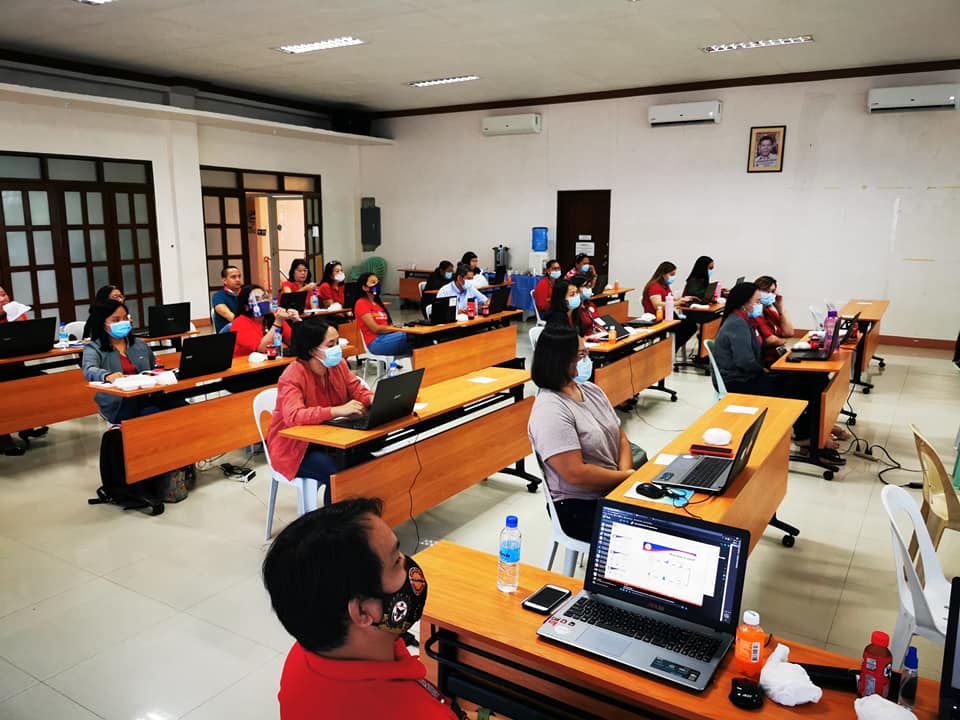Organization
Department of the Interior and Local Government
Best Practice Focus Area/s
Strategy Operations
Year Implemented
2017
This is a GBPR entry
Summary
One of the significant roles of the Department of the Interior and Local Government (DILG) is to provide comprehensive information about local government units (LGUs). However, these details can only be accessed and updated through a complex process. Because of this, the DILG Information Systems Interoperability Platform was created. It is an in-house developed application that acts as a gateway to various other applications and contains features such as a Document Management System (DMS), the Executive Information System (EIS), and an Attendance Monitoring System (AMS). Notably, the platform allowed the department to continue and improve its operations despite its shift to Work-From-Home (WFH) arrangement under the COVID-19 situation.
Background and Problem
One of the significant roles of the Department of the Interior and Local Government (DILG) is to provide comprehensive information about local government units (LGUs) to the national government, policy and decision-makers, other national government entities, and other relevant stakeholders. Said information should include demographics, economic profile, disaster-related data, awards and citations, Infrastructure, local officials, and performance. However, before the implementation of this project, all these details could only be viewed and updated by accessing a corresponding online application system one at a time. And as time went on, other bureaus, services, and operating units of the department started adopting online systems for their data management. It was quite a complex process, yet every employee—from the central, regional, provincial, city, and even down to the municipal office- was required to navigate it.
As the number of information systems increased, the management and maintenance of all the application systems became more challenging. Crucially, interoperability and data sharing among information systems were not clear, leading to duplicated efforts in collecting and encoding data across these systems. And overall, this also led to a slower processing time for all sorts of communication.

Solution and Impact
To address issues around interoperability and data sharing, to minimize the time spent on processing, encoding, and updating, and to minimize the need for constant client follow-ups, The DILG Information Systems Interoperability Platform was created. It is an in-house developed application that acts as a gateway to various other applications that support other bureaus, services, and operating units of the department. Notably, it contains over 40 in-house developed systems.
Some of its most notable features include:
- A feature to view and download information relative to the department’s issuances, announcements, and organizational knowledge, among others.
- A Document Management System (DMS) generates a unique document control number for each registered document. It also enables other operations such as document routing, processing, report generation, digital approval of documents, and QR Code signing.
- The Executive Information System (EIS) provides executives with critical information through dashboards, statistics, maps, and other reports, which can aid policy formulation and decision-making.
- And lastly, it also includes an Attendance Monitoring System (AMS).
In building the platform, the project team first conducted a systematic study with their Records and Administrative Service units. Then they started creating the DMS, not the whole system at first. Afterward, they performed a pilot test and conducted a series of training sessions. After its adoption, they enhanced it with other features such as intranet and SSO.
Because of the platform, the department could continue and improve its operations despite its shift to Work-From-Home (WFH) arrangement under the COVID-19 situation. The AMS allowed employees to record their attendance, tasks, and accomplishments while WFH. The AMS also served as the monitoring tool for supervisors to assess their subordinate’s daily accomplished tasks. Relatedly, the COVID-19 pandemic massively increased the department’s volume of transactions. Yet, these were met through the help of the DMS feature. And as the platform helps achieve many of the department’s operations in a paperless fashion, it has also contributed to saving costs.
Milestones
The Intranet with SSO started its implementation in 2017. As of today, the system is being utilized by a total number of 8,528 DILG officials and employees. These include the permanent, contractual, and contract of service and appointed individuals of the department. On 14 December 2020, DILG held its First Annual Online Performance Assessment and the project team was the recipient of the “Best Service Awardâ€, commending them for the development and widespread adoption of a much-needed in-house application system. The implementation of the DMS has helped fast-track communication within the different offices of the Department, both central and regional, especially now that the department is adapting to the new normal of the COVID-19 pandemic.
